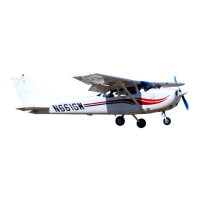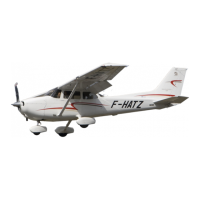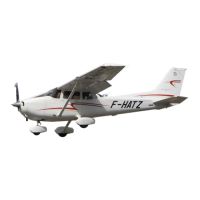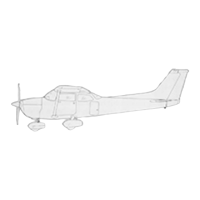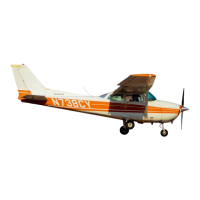CESSNA
MODEL 182T NAV
Ill
SECTION 4
NORMAL PROCEDURES
BEFORE TAKEOFF
WARM UP
If the engine idles (approximately 650 RPM) and accelerates
smoothly, the airplane is ready for takeoff. Since the engine is
closely
cowled for efficient in-flight engine cooling, the cowl flaps
should be open and the airplane pointed into the wind to avoid
overheating during prolonged engine operation on the ground. Long
periods of idling may cause fouled spark plugs.
I
MAGNETO CHECK
I
The magneto check must be made at 1800 RPM. Turn the1
MAGNETOS switch from theBOTH position to the R position. Note
the new RPM, then turn the MAGNETOS switch back to the BOTH
position to clear the spark plugs. Turn the MAGNETOS switch to
the L position, note the new RPM, then turn the switch back to the
BOTH position. RPM decrease should not be more than 175 RPM
on either magneto or be greater than 50 RPM differential between
magnetos. If there is a doubt concerning operation of the ignition
system, RPM checks at higher engine speeds will usually confirm
whether a deficiency exists.
I
No RPM drop may indicate a faulty ground to one magneto or
magneto timing set in advance of the angle specified.
I
ALTERNATOR CHECK
Make sure that both the alternator and alternator control unit are
operating properly before night or instrument flight, or flights where
electrical power is essential. Check the electrical system during the
MAGNETO check (1800 RPM) by setting all electrical equipmeni
required for the flight to the ON position. When the alternator and
alternator control unit are both operating properly, the ammeters will
show zero or positive current (amps), the voltmeters should show
between 27 to 29 volts, and no electrical system annunciations will
appear. Reduce the electrical load before reducing engine speed
so the battery will not discharge while the engine is at idle.
(Continued Next Page)
U.S. 4-31

